| September 6, 2009
The Great North American
Loudspeaker Tour: Rockport Technologies
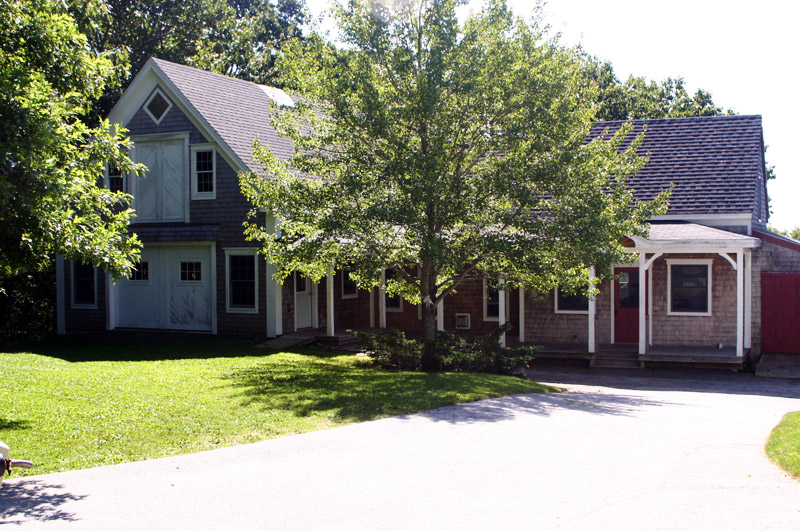
The Rockport Technologies facility in Rockport, Maine, USA.
Main designer: Andrew Payor
Product auditioned: Arrakis loudspeaker ($165,000
USD per pair; active version TBA)
Associated Equipment
- Amplifiers: Gryphon Colosseum (2), Gryphon Antileon
Signature Mono (2)
- Preamplifiers: Gryphon Sonata Allegro, Gryphon Legato
- Sources: Blue Smoke Black Box music server, MSB
Platinum DAC III, Rockport Technologies System III Sirius turntable
- Cables: Transparent Audio
Setup details: The Arrakis, in active form, is a
"work in progress," as designer Andrew Payor continues to determine if
"higher performance potential is available." Payor says he’s satisfied with
the Arrakis in passive form, "but thought the active approach was worth
exploring."
Listening room: Rockport Technologies’ main
listening room is approximately 30’6"L x 22’9"W x 11’H.
Thirty-eight RPG Binary Amplitude Diffsorbor (BAD) panels are mounted on angled soffits,
along with integral, tuneable, custom-made quarter-wave bass traps. The wall construction
is a triple-layered, constrained-mode-damped sheathing system built on a stud-grid matrix
power-nailed to 10"-thick, steel-reinforced concrete walls that themselves sit on
36"-wide, 6’-deep footings.
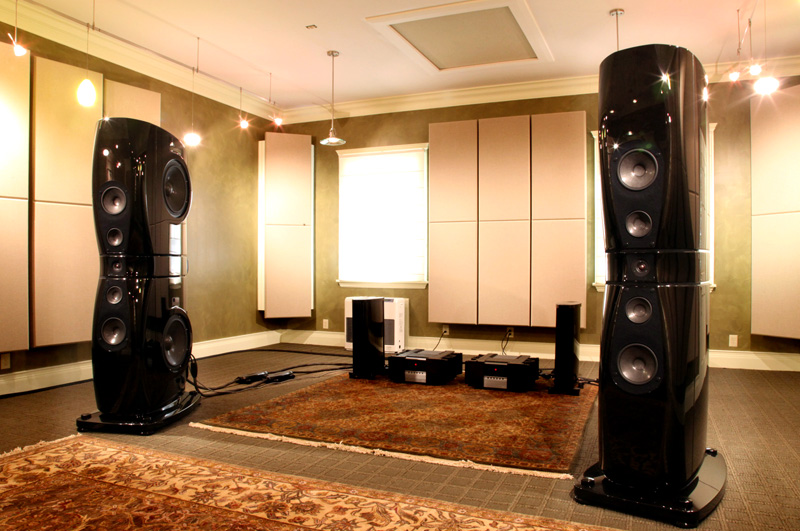
A pair of active Arrakises set up in Rockport Technologies’ largest listening
room.
Andrew Payor’s vision for the Arrakis: To
"convey the artists’ intent with music." Payor takes what he calls a
"balanced approach," asserting that "designers can be myopic in pushing
one, two, or five performance attributes, but unwittingly at the expense of 20
others." He says that "balance is optimizing as many performance attributes
simultaneously as possible," and that you shouldn’t "create a design that
improves on one or more areas" and "let it negatively impact another. Everything
must be better to stay balanced." Of the design of the Arrakis, he says that,
"due to the enormous size of the enclosure required, the utmost care had to be taken
to minimize its contribution to the overall sound of the loudspeaker, to the vanishing
point." He had to ensure that "the enclosure design’s acoustic profile
causes no destructive diffraction." He then stated that, "ultimately, after the
enclosure, drive-units, and all other aspects have been attended to, the singular element
that will either crown or damn the entire creation is the crossover."
According to Andrew Payor, the Arrakis is best suited
to: The Arrakis is "designed and built for those passionate about music and who
have the necessary space and resources. Unapologetically, it is what it needs to be. The
Laws of Similitude demand that, to attain wide bandwidth, high sensitivity, and low
distortion, you’re gonna need a big-ass speaker."
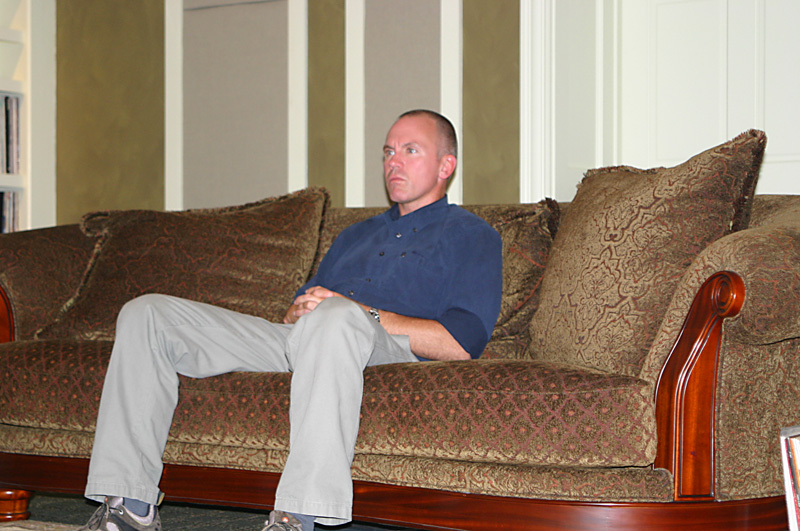
Jeff Fritz on the Rockport listening sofa.
Listening impressions
Music listened to included high-resolution tracks from the
Who, and CD-resolution cuts from such artists as Pete Seeger, Eden Atwood, Alison Krauss,
the Bruce Katz Band, and many others.
There is no separating a loudspeaker from its listening
environment, and in this respect Rockport Technologies has an invaluable tool in
evaluating the Arrakis: a listening room built from the ground up to structurally and
acoustically support a speaker of the magnitude of the Arrakis. So it was no surprise to
me that the Arrakises could create the illusion of massive performance spaces. For
instance, the sense of scale when they reproduced a full chorus was remarkable in its
breadth. The Arrakises could make the recording sound almost lifelike because they were
able to reproduce the massive vocal power and physical dimensions of a large chorus while
staying linear and neutral. However, they could also scale back to replicate a single
instrument or singer -- not unlike the best minimonitors. The Arrakises’ ability to
track all types of music, in terms of both scale and accuracy of imaging, with
lightning-quick micro- or macrodynamic swing, seemed virtually unlimited.
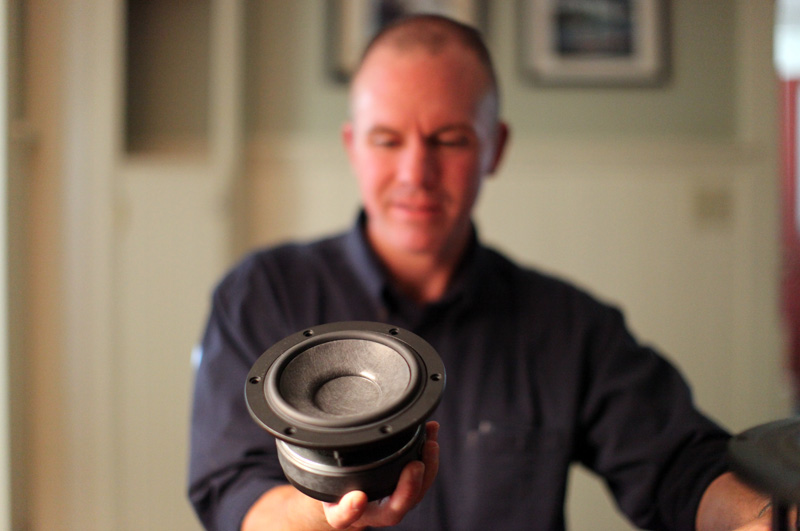
Jeff Fritz holds an Arrakis midrange driver.
Still, the most striking aspect of the active Arrakis
loudspeaker is one based in the combination of its groundbreaking transparency, linearity,
and high resolution. It wasn’t only its precisely defined, pinpoint soundstaging, but
also that its clarity made the images within that soundstage almost perfectly formed
approximations of the real things: no fuzzy outlines, no image wander, no super-size-me
bloating or honey-I-shrunk-the-performers miniaturization. Alison Krauss’s "When
You Say Nothing at All" was reproduced with such transparency and high resolution
that it was as if a three-dimensional image was standing right there. Stringed
instruments sounded so transparent that I kept pondering the question: Are we reaching the
limitations of the recording or of the speaker?
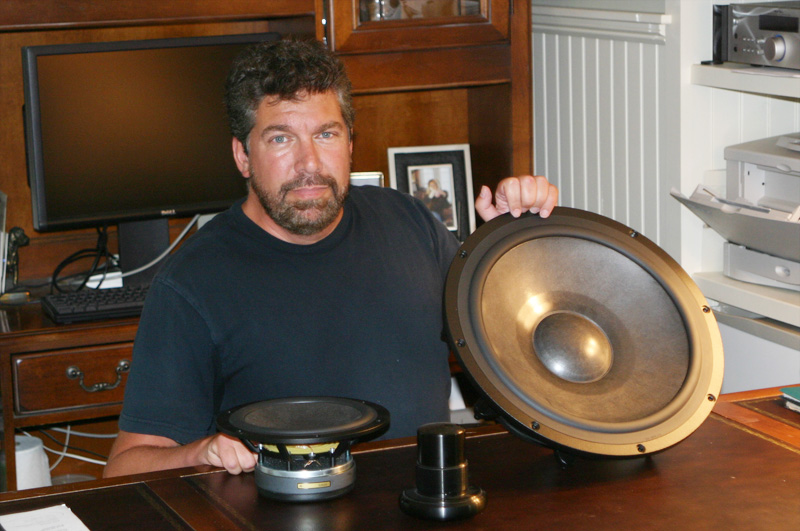
Andy Payor shows the massive woofer used in the Arrakis.
Company impressions
Rockport Technologies is defined by the ideals of Andy
Payor. His deep, multidisciplined knowledge of engineering seems to guide him in many
areas of design at once, with success in a broad array of parameters that leads to
balanced yet crazy-ambitious final products. But it is Payor’s obsessive requirement
to do things beyond what might be considered normal and practical -- evidenced in the
Arrakis and in the construction of his listening room -- that fundamentally shape Rockport
products. The result of all this is an almost fanatical commitment to create a flagship
product that can reproduce music with absolute fidelity to the original recorded event.
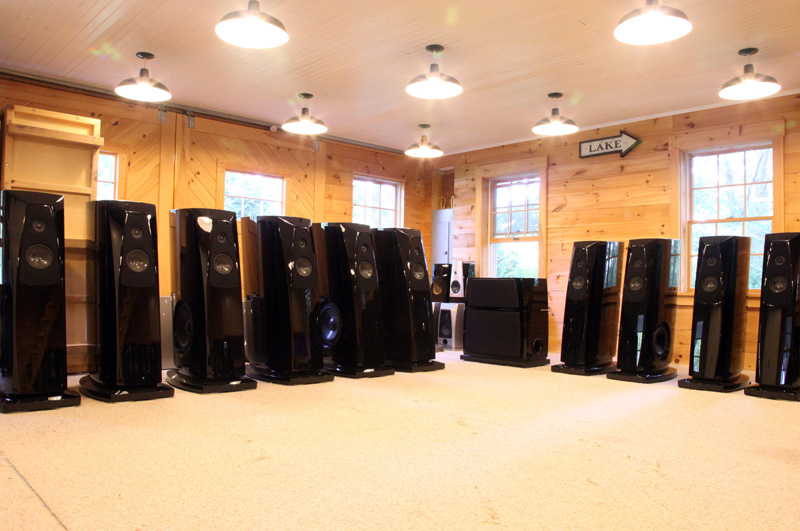
Rockport Technologies loudspeakers ready to be packed and shipped.
Conclusion
I concluded my visit to Rockport Technologies at Andy
Payor’s lakeside cabin, just outside Rockport, Maine. He took me there after the
listening session at the factory because he said that it’s often the place that
provides him with the creative inspiration that fuels his development of his products. In
its beauty, it was spectacular.
As the sun shone through the trees and ospreys flew high
over the lake, I wondered just how such beauty could be aspired to in the creation of a
mere audio product. Then I realized that such beauty should be aspired to, if the
goal is to transcend audio and create something truly special.

. . . Jeff Fritz
jeff@ultraaudio.com
|